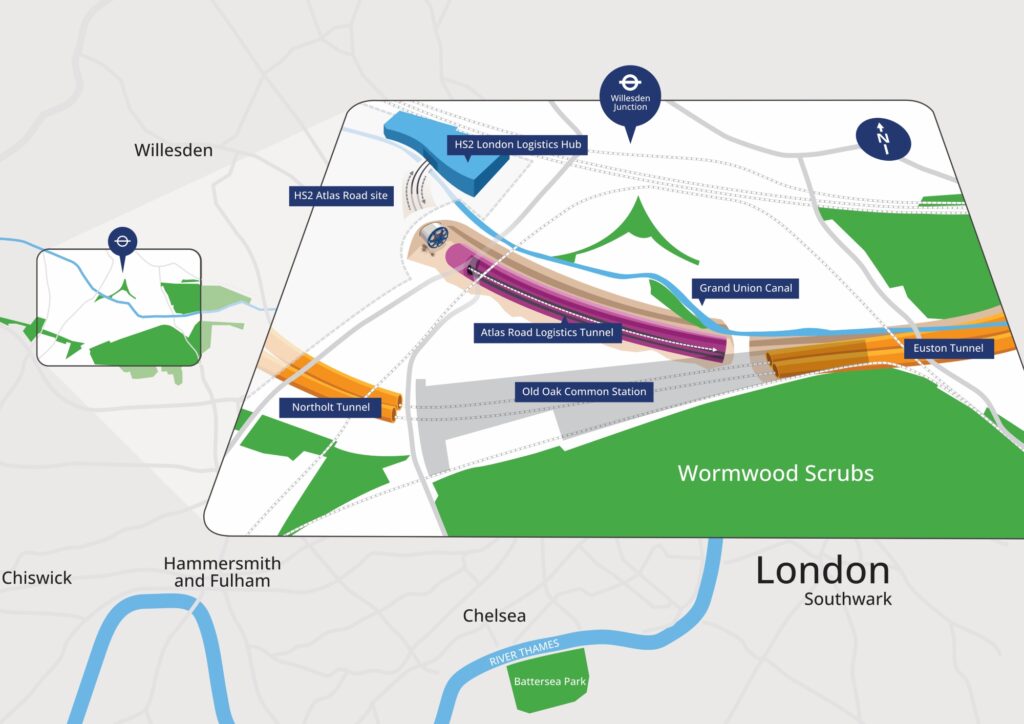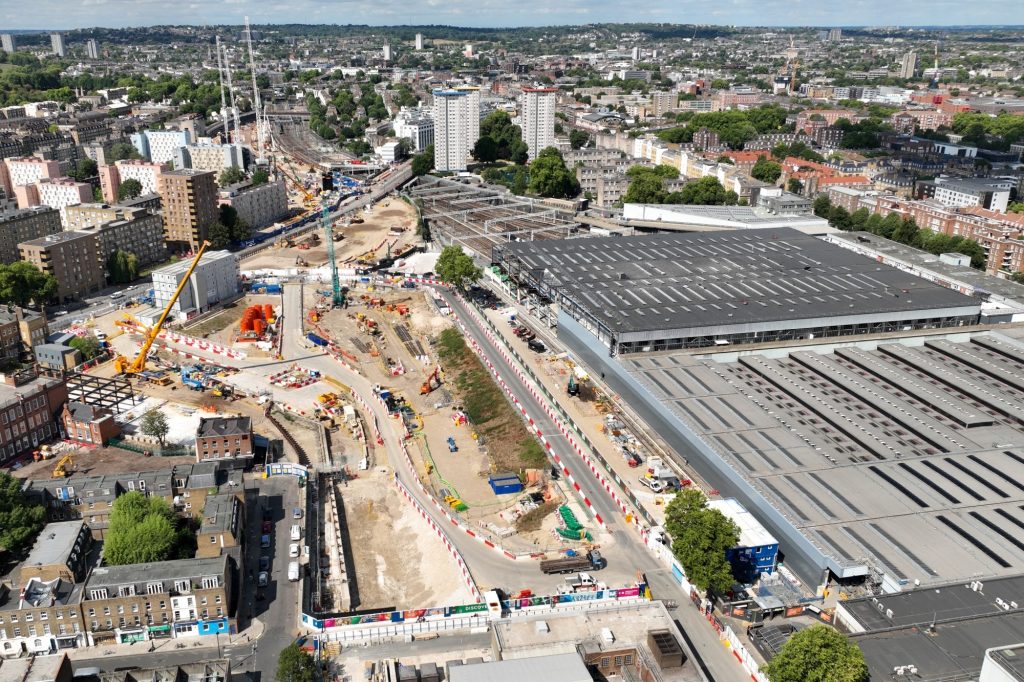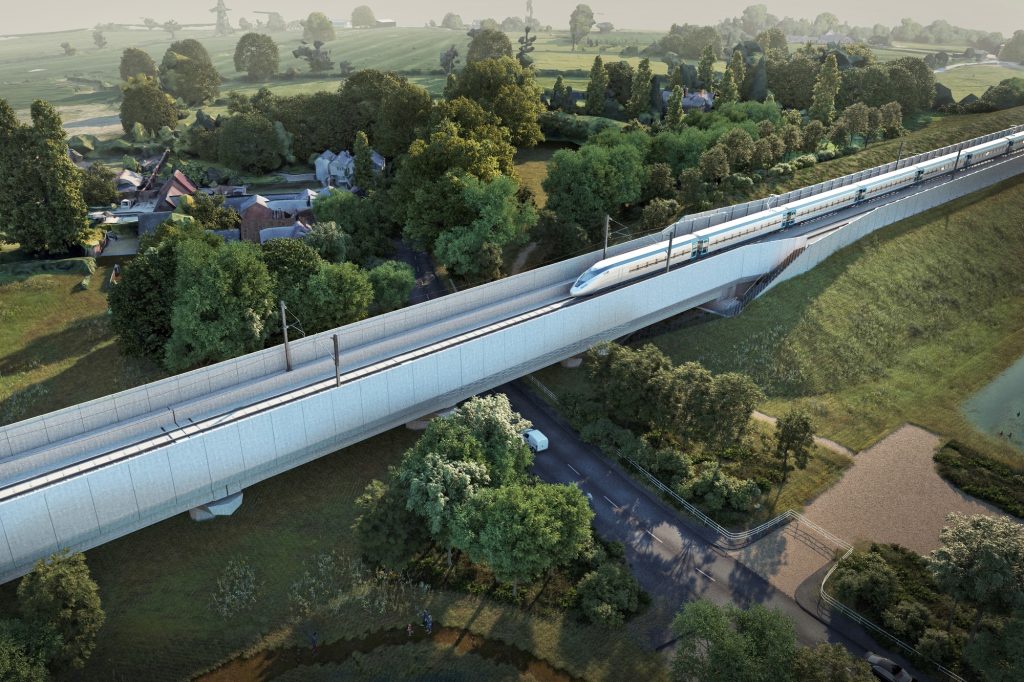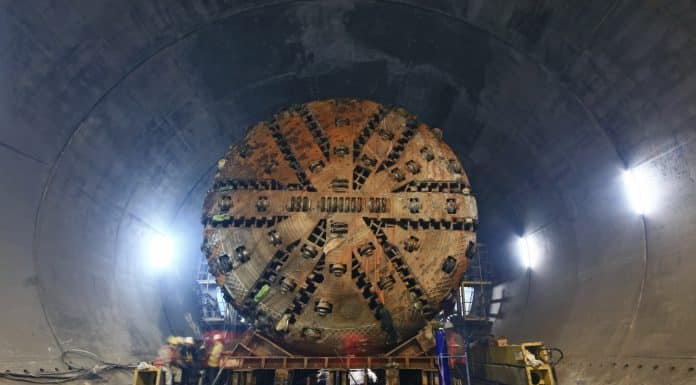TBM breaks through at HS2’s Old Oak Common site completing logistics tunnel

This post was originally published on this site
An 847t tunnel boring machine (TBM) called Lydia has broken through at HS2’s Old Oak Common station, completing the 853m long logistics tunnel.
The Atlas Road Logistics Tunnel runs from the Atlas Road logistics hub to Old Oak Common station. It will be used to support the construction of HS2’s Euston tunnel, due to be built eastwards from Old Oak Common subject to government green light after it sources funding for the tunnel and HS2 station.
The logistics tunnel will be used to deliver materials to the two Euston Tunnel TBMs, including over 56,000 concrete tunnel segments manufactured by Strabag in Hartlepool, and take away the London Clay excavated.
Use of the logistics tunnel will also remove one million lorry journeys off London’s roads, according to HS2 Ltd. Bringing in materials by road and removing the excavated spoil for the Euston Tunnel would have been logistically challenging and would have had significant impact local roads and on the work to construct the station. The logistics tunnel was the optimum solution to enable HS2 to reach Euston. Once the Euston Tunnel is complete and the railway is operational, the logistics tunnel will be backfilled.
HS2’s London tunnels contractor, Skanska Costain Strabag joint venture (SCS JV) constructed the tunnel with a TBM that was made from parts from a machine which was previously used to make the Elizabeth Line.
Over the past nine months, TBM Lydia has removed 62,000t of London Clay, all of which is sent by rail for “beneficial reuse across the UK” and has installed 535 concrete rings, according to HS2 Ltd.
The segments for the tunnel rings were manufactured by Pacadar UK in Kent.
Lydia broke into the eastern end of the Old Oak Common underground station box which is currently under construction by Balfour Beatty Vinci Systra joint venture (BBVS JV).
According to HS2 Ltd, SCS JV will lower two additional TBMs into the box and assemble them later this year ready to bring the HS2 line into Euston. Once they are in place BBVS JV will seal the box and continue to construct HS2’s super-hub station.
A team of 100 people has been working around the clock to complete the tunnel, working in shifts to operate the TBM and the above ground operations.
The SCS JV team have also used their expertise to develop more team members at the early stages of their careers, including apprentices and graduates for whom this was their first time constructing a bored tunnel, HS2 Ltd said in a statement.
HS2 Ltd project client director Malcolm Codling said: “The completion of the Atlas Road Logistics Tunnel takes us closer along our journey to bring HS2 into central London at Euston. The logistics tunnel is a key part of our plans to enable us to construct the Euston Tunnel and will reduce the construction impact on the local community.”
SCS managing director James Richardson said: “The completion of the Atlas Road logistics tunnel paves the way for us to deliver our London tunnels programme to Euston. The tunnel supports our continued commitment to reducing cost and carbon by removing one million lorry journeys off London’s roads.”
Like what you’ve read? To receive New Civil Engineer’s daily and weekly newsletters click here.






Responses